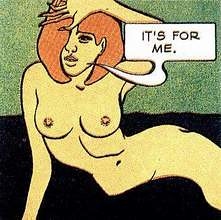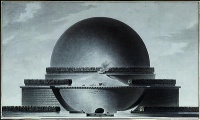Claude Lévi-Strauss @100
[Youtube=http://www.youtube.com/watch?v=qjaXikDp5ZI]
Luciano Berio‘s Sinfonia[1] uses text of The Raw and the Cooked (1964)
The following articlette (it such a pity the English language does not have diminutive) on the 100th birthday of Claude Lévi-Strauss (born November 28, 1908) approaches the work and person of Claude Lévi-Strauss from the angle of structure, anthropologica, trivia and taboo.
- structure
The stucture angle leads to structuralism, a French intellectual movement internationally fashionable during the 1960s and 1970s, based on Russian Formalism, Prague school of structuralism and the teachings of Ferdinand de Saussure.
That Claude Lévi-Strauss sought to investigate structures became apparent with the publication of his debut work The Elementary Structures of Kinship (1949). The word structure in its title betrays its conceptual affiliations to what was later to be called structuralism.
In a way, this is a bit facile since structure is a fundamental notion covering the whole of science; from a child’s verbal description of a snowflake, to the detailed scientific analysis of the properties of botany, the concept of structure is an essential foundation of nearly every mode of inquiry and discovery in science, philosophy, and art.
I think the new approach heralded by structuralism was the move a way from dogmatism, great man theory and other subjective “methods” to a more genre theoretic approach in the social sciences.
- anthropologica and taboo
My next angle is the angle of anthropologica and taboo. The interest in anthropologica, my neoglogism for sexual anthropology started with Margaret Mead also deserve mention here as well as The Sexual Life of Savages in North-Western Melanesia. Strauss’s work The Elementary Structures of Kinship dealt with such notions as alliance theory, the incest taboo and yes, the exchange of women, what we would call swinging or wife swapping in contemporary society. These subjects gave Strauss his place in the awakening sexual revolution.
- trivia
Luciano Berio‘s Sinfonia[1] uses text of the The Raw and the Cooked, and the The Raw and the Cooked (1964) is also the title of an album by the Fine Young Cannibals.
Strauss’s Structural Anthropology (1958) reminds me of American social critic and folklorist Gershon Legman‘s Rationale of the Dirty Joke: (An Analysis of Sexual Humor) (1968), a tour de force of erotic folklore and his planned volume the motif-index of erotic humor.
About his memoirs Tristes tropiques (1955) I can say that it is a travelogue that was well-received on its publication. The organizers of the Prix Goncourt lamented that they were not able to award Lévi-Strauss the prize because Tristes Tropiques was technically non-fiction . Georges Bataille wrote a favourable review (Critique, n°105, février 1956) and Susan Sontag classed it as one of the 20th century‘s ‘great books‘.
His most controversial works are:
- Mythologiques I-IV (trans. John Weightman and Doreen Weightman
- Le Cru et le cuit, 1964, The Raw and the Cooked, 1969
- Du meil aux cendres, 1966, From Honey to Ashes, 1973
- L’Origine des manières de table, 1968, The Origin of Table Manners, 1978
- L’Homme nu, 1971, The Naked Man, 1981)
See also:
- structural anthropology, structuralism, mythology
This post should have successfully connected Strauss and Legman.








